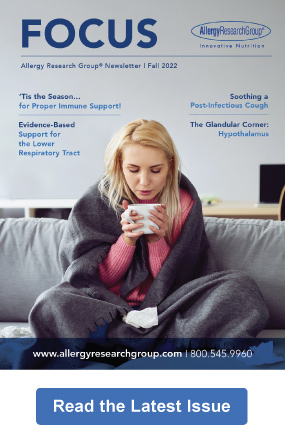Share this post
Fighting oxidative stress and inflammation with natural substances
If you cut up an apple and leave it on the counter, you may notice its white flesh turn to brown. A similar effect happens to our own cells when they’re exposed to unstable molecules known as free radicals. This “rusting,” or “browning” process is called oxidation, and in many cases is a normal and healthy effect of the various biochemical processes happening in the body. For example, when we breathe oxygen to burn up the calories in the food we eat to make energy, our cells release “exhaust,” which in turn creates free radicals.
Over time, oxidative stress compromises the body’s ability to function properly, increasing the risk for many chronic health issues, including cancer.
When external factors cause more than normal oxidation, however, or when the amount of free radicals is greater than the amount of antioxidants in the body, oxidative stress can damage our cells, proteins, and even DNA. Over time, oxidative stress compromises the body’s ability to function properly, increasing the risk for many chronic health issues, including cancer.[1]
Sources of free radicals and oxidative stress include:
- Diets high in calories, sugars, and refined carbohydrates
- Diets high in charbroiled foods, such as barbecued meats
- Over-exercising or under-exercising
- Drinking alcohol
- Sleep deprivation
- Excessive emotional and/or physical stress
- Cigarettes and tobacco products
- Poor liver and digestive health, which compromises detoxification pathways
- Chronic infections (like Lyme disease, Epstein-Barr, and dental infections)
- Exposure to air pollution, environmental toxicants, and environmental molds
- Exposure to radiation
Anti-oxidants to fight oxidative stress
Antioxidants and antioxidant-promoting strategies help combat the negative health effects of free radicals and the oxidative stress they cause. Substances that increase nuclear factor erythroid 2 (NF-E2)-related factor (Nrf2) may be of particular benefit in keeping our cells healthy, strong, and durable in the face of oxidative damage and toxin exposure.
The Nrf2 cell-signaling pathway regulates a variety of genes that control antioxidant production, detoxification, and cell survival in response to injury and inflammation.[2],[3] In fact, Nrf2 has been called the master regulator of the antioxidant response element (ARE) in the body. The Nrf2-ARE pathway is activated by oxidative stress – turning on the response when it is needed to help protect our cells.
Nrf2 activation plays a protective, helpful role on health, which has led researchers to explore ways of optimizing Nrf2 activation, from exercise, to diet, to dietary supplements.[4]
Nrf2 activation plays a protective, helpful role on health, which has led researchers to explore ways of optimizing Nrf2 activation, from exercise, to diet, to dietary supplements.
Several natural products that support the Nrf2 pathway and activate its crucial effects include:
- Sulforaphane[5]
- Pomegranate[6],[7]
- Green coffee[8],[9],[10]
- Green tea extract[11]
- Milk thistle[12],[13]
- Gingko biloba[14],[15]
- Lipoic acid[16],[17]
Certain supplements also may help reduce the impact of oxidation and toxin exposure on an ongoing basis, such as olive leaf,[18] N-acetylcysteine,[19] glutathione, B-complex vitamins, and multivitamins. Because the soil has become depleted of necessary vitamins and minerals in many growing regions, supplemental greens products, which provide a wide array of phytonutrients (plant-derived nutrients), vitamins, and minerals can also be of benefit.
These natural products may be of particular benefit to the elderly population, as the ability of the body to upregulate Nrf2 and the body’s levels of glutathione, a potent antioxidant, both decline with age.[20],[21] Regardless of one’s station in life, however, virtually all of us are vulnerable to the effects of oxidation and free radical damage, and could stand to get a little extra Nrf2 protection.
Click here to see References
[1] Gupta RK, et al. Oxidative stress and antioxidants in disease and cancer: a review. Asian Pac J Cancer Prev. 2014;15(11):4405-9.
[2] NFE2L2 nuclear factor, erythroid 2 like 2 [Homo sapiens (human)] Gene ID: 4780. NCBI. Updated on 23-Jul-2018, accessed 24-Jul-2018. https://www-ncbi-nlm-nih-gov.nunm.idm.oclc.org/gene/4780
[3] Li YJ, et al. Nrf2 is a protective factor against oxidative stresses induced by diesel exhaust particle in allergic asthma. Oxid Med Cell Longev. 2013;2013:323607.
[4] Sayin VI, et al. Activation of the NRF2 antioxidant program generates an imbalance in central carbon metabolism in cancer. Elife. 2017 Oct 2;6.
[5] Sohel MMH, et al. Sulforaphane protects granulosa cells against oxidative stress via activation of NRF2-ARE pathway. Cell Tissue Res. 2018 Jul 21.
[6] Mandal A, et al. Anti-inflammatory mechanism involved in pomegranate-mediated prevention of breast cancer: the Role of NF-κB and Nrf2 Signaling Pathways. Nutrients. 2017 Apr 28;9(5).
[7] Husain H, et al. Pomegranate action in curbing the incidence of liver injury triggered by Diethylnitrosamine by declining oxidative stress via Nrf2 and NFκB regulation. Sci Rep. 2018 Jun 5;8(1):8606.
[8] Priftis A, et al. Cell‑specific and roasting‑dependent regulation of the Keap1/Nrf2 pathway by coffee extracts. Mol Med Rep. 2018 Jun;17(6):8325-8331.
[9] Volz N, et al. Effect of coffee combining green coffee bean constituents with typical roasting products on the Nrf2/ARE pathway in vitro and in vivo. J Agric Food Chem. 2012 Sep 26;60(38):9631-41.
[10] Kalthoff S, et al. Coffee induces expression of glucuronosyltransferases by the aryl hydrocarbon receptor and Nrf2 in liver and stomach. Gastroenterology. 2010 Nov;139(5):1699-710, 1710.
[11] Na HK, Surh YJ. Modulation of Nrf2-mediated antioxidant and detoxifying enzyme induction by the green tea polyphenol EGCG. Food Chem Toxicol. 2008 Apr;46(4):1271-8.
[12] Surai PF. Silymarin as a Natural Antioxidant: An Overview of the Current Evidence and Perspectives. Antioxidants (Basel). 2015 Mar 20;4(1):204-47.
[13] Arafa Keshk W, et al. Modulatory effect of silymarin on nuclear factor-erythroid-2-related factor 2 regulated redox status, nuclear factor-κB mediated inflammation and apoptosis in experimental gastric ulcer. Chem Biol Interact. 2017 Aug 1;273:266-272.
[14] Liu XP, et al. Extract of Ginkgo biloba induces phase 2 genes through Keap1-Nrf2-ARE signaling pathway. Life Sci. 2007 Apr 3;80(17):1586-91.
[15] Chen JS, et al. Nrf-2 mediated heme oxygenase-1 expression, an antioxidant-independent mechanism, contributes to anti-atherogenesis and vascular protective effects of Ginkgo biloba extract. Atherosclerosis. 2011 Feb;214(2):301-9.
[16] Suh JH, et al. Decline in transcriptional activity of Nrf2 causes age-related loss of glutathione synthesis, which is reversible with lipoic acid. Proc Natl Acad Sci U S A. 2004 Mar 9;101(10):3381-6.
[17] Fayez AM, et al. Alpha lipoic acid exerts antioxidant effect via Nrf2/HO-1 pathway activation and suppresses hepatic stellate cells activation induced by methotrexate in rats. Biomed Pharmacother. 2018 Sep;105:428-433.
[18] Yuan JJ, et al. Enzymatic hydrolysis of oleuropein from Olea europea (olive) leaf extract and antioxidant activities. Molecules. 2015 Feb 11;20(2):2903-21.
[19] Carlsten C, et al. Anti-oxidant N-acetylcysteine diminishes diesel exhaust-induced increased airway responsiveness in person with airway hyper-reactivity. Toxicol Sci. 2014 Jun;139(2):479-87.
[20] Zhang H, et al. Nrf2-regulated phase II enzymes are induced by chronic ambient nanoparticle exposure in young mice with age-related impairments. Free Radic Biol Med. 2012 May 1;52(9):2038-46.
[21] Lang CA, et al. Low blood glutathione levels in healthy aging adults. J Lab Clin Med. 1992 Nov;120(5):720-5.
The information provided is for educational purposes only. Consult your physician or healthcare provider if you have specific questions before instituting any changes in your daily lifestyle including changes in diet, exercise, and supplement use.
Share this post
Dr. Erica Zelfand
Related posts
Ways to Ease Inflammation and Depression
Smart lifestyle choices for a happy brain and healthy mood In last week’s post we explored the ways in which inflammation can cause depression. The science shows that we cannot blame genetics alone for depression. That’s a good thing: it means there is a lot we can do to heal our brains. Here are…
Health Benefits of Grapefruit Seed Extract
A natural antimicrobial and antioxidant with apparent anti-aging effects Grapefruit, also known as Citrus paradisi, is a hybrid fruit that originated centuries ago as a natural cross between sweet orange and pomelo.[1] While the seeds of the grapefruit are not typically eaten, grapefruit seed extract (GFSE) is increasingly being used as a dietary supplement,…
Selenium and Immunity
How this trace mineral supports immune system function Winter is just around the corner – is your immune system up to snuff? (Or sniffles!) The seasonality of infectious diseases is well established,[1],[2] as any of us who have suffered from the flu can attest. All nutrients are required in greater quantity during an infection,…
Pine Bark for Blood Vessels Big and Small, Part 1 of 2
A natural solution for high blood pressure, hemorrhoids, and varicose veins At first glance, the ailments of high blood pressure, hemorrhoids, and varicose veins seem to have little in common. As any holistically trained healthcare provider knows, however, these conditions all share one common cause: poor vascular health. Also known as the circulatory system,…
Taking a Month Off Alcohol: What Will a Month Booze-Free Do for You?
A trend growing in popularity takes center stage, with clinical studies backing its benefits Perhaps you’ve seen it proudly announced on social media, “I’m going a month booze-free,” by a friend or acquaintance. Or maybe it has infiltrated your sphere because of news stories on outlets such as NPR, the BBC, Fortune, or the…
The Power of CoQ10
CoQ10’s effects on fatigue, fertility, and the heart Do you ever feel as if you don’t have enough energy? You’re not alone! Energy is not just a function of mood, positive thinking, or lack of sleep, although all those things play a role. Energy is, literally, the power to do work. Within the body,…
Categories
- Botanicals (56)
- GI Health (53)
- Healthy Aging (121)
- Immune Support (39)
- In The News (39)
- Kids Health (21)
- Stress and Relaxation (50)
- Uncategorized (1)
- Video (9)
- Vitamins & Minerals (51)




